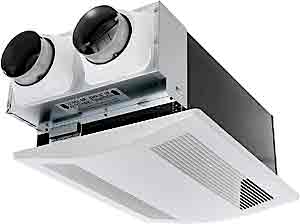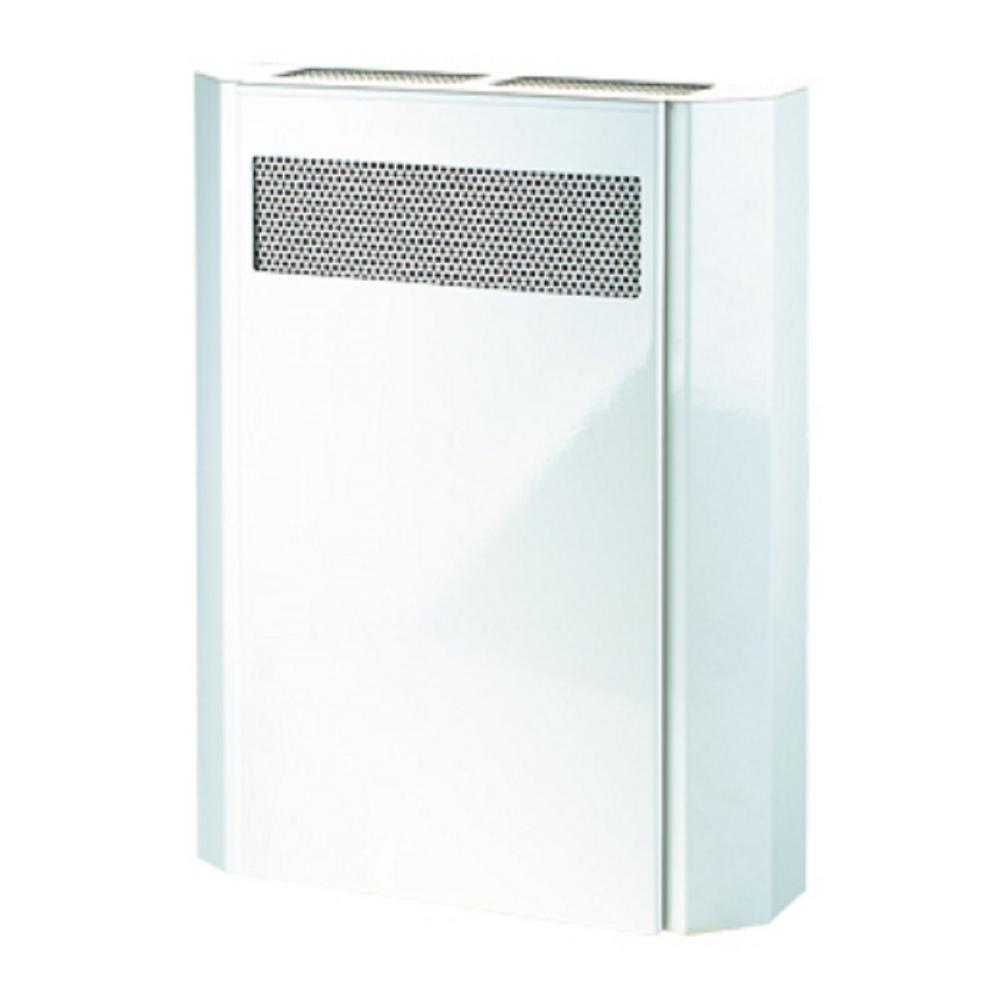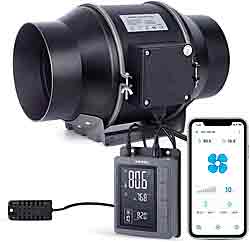Properly Venting a Tiny House
Do-It-Yourself builders usually do a great job of constructing tiny homes. Every crack is carefully sealed, every gap insulated. The DIY builder can actually do too good a job, causing oxygen levels to get dangerously low, and humidity trapped inside to create a host of issues. Properly venting a tiny house is an essential design aspect to consider.
Dangerous Humidity Levels
Each day, the human body expels 3.5 cups of water through respiration and perspiration. The shower, a ventless washer/dryer combo, and cooking add additional humidity. This moisture is easily dispersed in a larger home. But within the small volume of a tiny home, this moisture becomes a serious issue. On a cold day you’ll see this moisture condensing on the windows, poorly insulated areas, and other areas like cold water pipes and wheel wells. Dangerous black mold can quickly take hold in these damp areas. The goal of properly venting a tiny house is to reduce this humidity.
Moisture also collects in and under your mattress if not properly ventilated. You will need a moisture venting underlay.
Indoor air quality
Any appliance that uses combustion uses oxygen. Often these appliance have an outside air source, some do not: the kitchen range, some wood stoves, and other heating options like the Mr. Buddy propane heater, as wells as kerosene heaters. They will use the room oxygen. This oxygen needs to be replaced by venting, or serious health consequences for the occupants will result. In addition to the dangerous health effects low oxygen level produce, stifled combustion will create deadly levels of carbon monoxide and other deadly gasses. Carbon monoxide detectors are required in all homes. This is even more critical in a tiny home.
Properly Vent a Tiny House by Replacing Oxygen Without Losing Heat
There are warning placards in my RV to open the door and roof vents when using the propane cook top. I also leave a window partially open all night to avoid the moisture buildup. Opening windows and doors is a good way to address poor indoor air quality if you live in a warm climate. In the high mountains, the temperature can get down into the thirties most nights, even in the summer. To avoid running the furnace all night, we sleep in really good sleeping bags and even wear hats. We kick the heater on about an hour before we get up, but it can still be pretty cold. This is fine for a weekend camping trip, but might get old after awhile.
Enter the HRV (heat recovery ventilator) and ERV (energy recovery ventilator)
If humidity during the winter is an issue, you’ll want to choose an HVR. These units use the heat of the old stale air to preheat the fresh incoming air. Humidity is exhausted with the old air.
Energy (or Enthalpy) Recovery Ventilation will retain much of the humidity inside the structure. In the summer, this humidity transfer is reversed. An EVR is better in hot, humid areas.
The Panasonic FV-04VE1 WhisperComfort ERV Ceiling Insert Ventilator offers a revolutionary way to provide balanced ventilation with a ceiling insert ERV. This unit provides a low rate of continuous air exchange. It supplies fresh air to replace exhausted air, helping to balance air pressure within the home. It is in-ceiling mounted, as seen in the video below, and can be mounted above the shower. In this video, the unit is cleverly modified to suck old, moisture-laden air out of the bathroom and introduce fresh air into the adjacent living room.
Bring in fresh air while exhausting stale air
The VENTS MICRA 150 is a single room heat recovery ventilator suitable for applications such as bedrooms, living rooms, and offices, as well as apartments and small tiny homes. It exhausts stale air outdoors and draws in fresh air to replace it, while the heat transfers from the outgoing air to warm up the incoming air.
Warm, stale air from the room moves through the filter and core, and then is exhausted outside. The intake and extract airflows are fully separated. It provides a great solution for simple and efficient single room heat recovery applications. Using the MICRA 150, both cooling and heating season results in considerable energy savings.
These units are designed to run 24/7, so the installation location should be given careful thought. You don’t want to hear it running near the bedroom at night.
The single-room heat recovery unit MICRA 150 is equipped with an anti-freeze protection system. A special thermostat prevents condensation from freezing during cold weather conditions. If the exhaust air temperature at the outlet of the core drops down below the set point, the supply fan stops. Warm extract air heats the core up and the exhaust air temperature at outlet of the core rises.
This outside air vent also needs to be provided for these units to operate properly. For more information on ducting see my web page on installing ducting.
Range Hoods
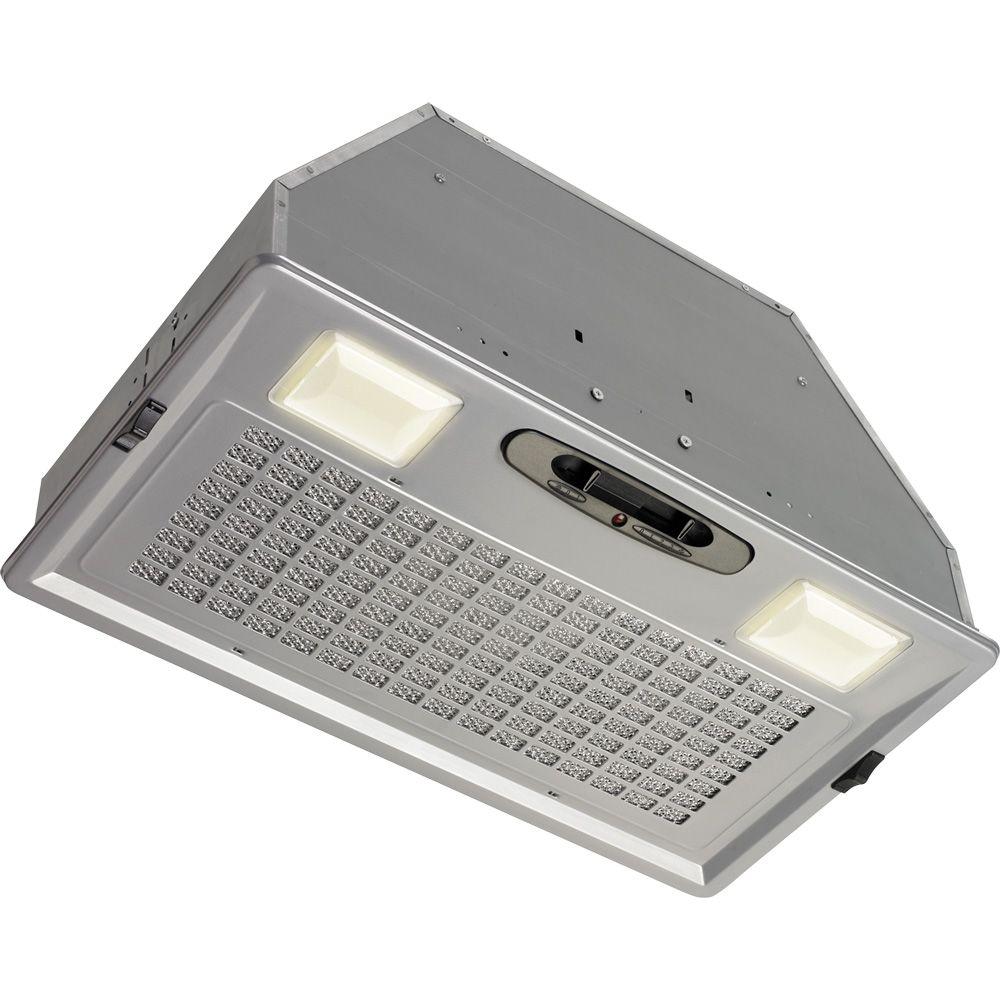
A gas range uses oxygen during the combustion process, and creates hazardous gasses like carbon monoxide. A range hood, vented to the outside, is an essential appliance for a tiny home. Most range hood are thirty inches wide or more, but this Broan 390 Custom Range Hood is only 20.5″ wide. It is a fully integrated range hood system with a 390 CFM fan designed to fit flush with the bottom of a cabinet or custom hood installation. Select this silver-finished blower with multi-speed control to provide quiet, effective performance. Properly installed, this range hood vents harmful gasses outside.
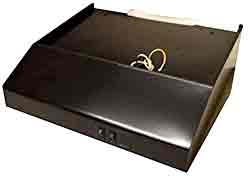
This JENSEN 12 Volt Power Range Hood with fan and light is perfect for a tiny house running on solar or a converted panel truck running on battery. A quiet axial fan draws smoke and heat through a furnished louvered damper. Easy-to-clean removable filter. Easy-to-read exterior rocker style switches. 20 inch length x 5 inch height x 18 inch depth.
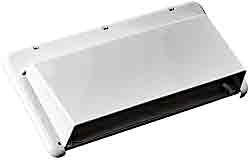
You’ll need this RV Range Vent Cover Exterior Vent with locking damper for the outside of your tiny house. Features an RV hood damper that allows the external flap door to open when the exhaust fan is turned on while the two swivel friction locks latch the single flap (runs the length of the vent) in the closed position when traveling down the road.
Make-up air is an essential element for properly venting a tiny house
 If you’re going to be pushing air out of your house, you need to provide a way for fresh air to come into the house.
If you’re going to be pushing air out of your house, you need to provide a way for fresh air to come into the house.
I like the Broan-Nutone MD8T 8″ Broan Automatic Make-Up Air Damper because it can can be installed under the range to provide fresh air. It automatically opens and closes when the range hood is operated.
As your exhaust fans vent harmful gasses out of the house, you must also have a source for fresh air into your tiny home. Fresh air vents can be a safeguard from the back-drafting (the act of pulling gas, carbon monoxide, and/or smoke back into the house) of toxic combustion by-products. They also prevent drawing air from nasty places like the composting toilet.

See more on make-up air, venting, passive solar air intake heating, and intake HRV in my blog post.
Preventing Dangerous “Micro Climates” With Good Air Circulation
Even with proper venting, there may be areas where high humidity levels persist. Moisture can buildup in areas of poor air circulation. Tiny house lofts are a major problem area because they are frequently cut off from the tiny home air circulation areas. Other areas can include behind the laundry appliances, the refrigerator, utility closet, and in the cabinets under the sinks.
 Fans like this Through the Wall 2-Speed with Airflow Adapter Room to Room Fan can force air circulation into cut-off areas. They can also help maintain the heat levels in the winter by moving warm are into cold corners.
Fans like this Through the Wall 2-Speed with Airflow Adapter Room to Room Fan can force air circulation into cut-off areas. They can also help maintain the heat levels in the winter by moving warm are into cold corners.
This fan allows you to adjust the air transferring power to quickly change or maintain temperatures in adjoining rooms. The fan’s grille can be painted to match your interior style.
Use in conjunction with mini-splits, fireplaces, wood stoves and window air conditioning units to avoid micro-climates in your tiny house.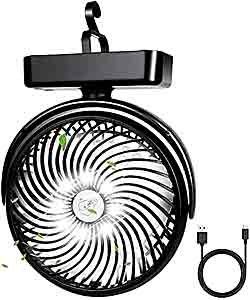
Use a variety of fans for air circulation
You may need several small fans to get the air circulating into cut-off areas of stuffiness and trapped humidity.
This unique rechargeable battery-operated fan can sit on counter or hang in any convenient location. The fan is 8.6″ and can run up to 70 hours per charge. This well-thought-out fan has three speeds and also has a bright light built in. There is even an essential oil diffuser function. Click on image to see more.
See the “widget” section of this page for more unique fans and get that air moving.
Be Creative in Your Effort to Properly Vent Your Tiny House or RV
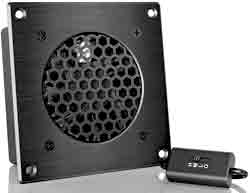
You never know where you might find the ideal fan for a particular problem spot. If the product you need isn’t available, try exploring other options.
This fan was intended to vent a cabinet full of AV equipment. Who knew it could be the perfect solution for promoting airflow into that cabinet under the sink? It’s ultra-quiet and has four speeds.
When venting an enclosed space like a cabinet or closet, you need to have entry air hole and exit air holes. So besides mounting the fan, you will need to drill some air exit points as well.
Do your best to have cool air coming into the bottom of the area and hot air exit vents in the upper part of the cabinet. This will use the natural characteristic of warm air rising to get the best airflow.
Creating More “DRY” Heat Than You Need
Wood stoves provide dry heat. Sometimes even the smallest wood stove provides way more heat that you need. This is good actually. You can open a window just a bit to vent the moist air without worrying about some cold air coming in.
Visit this page for the best ways to heat a tiny house and/or RV.
Properly venting a tiny house means thinking “outside the box”
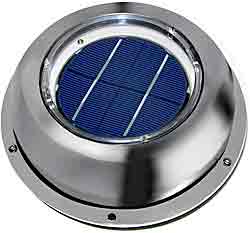
Use this vent to exhaust humid air from far corners like the loft and/or the bed over the cab in an RV.
This ECO HOUSE Solar Powered Roof Vent 5-inch fan is ideal for RV, boats, and tiny houses. It’s solar powered and has a rechargeable battery so it can run at night.
You’ll need to do a little engineering to extend it through your roof or wall, and also add a vent cover inside that can close it off when you don’t want to use it in the winter.
Inline Duct Fan with Temperature Humidity Intelligent Controller
This unique duct fan can be used to circulate air in and out of a closed loft. The duct fan has a large air volume (350 CFM), low noise (32db), fast speed, and the functions of ventilation, deodorization, and temperature regulation. Using a Wi-Fi-enabled smart controller with automatic, manual, and timer modes, it creates a comfortable living environment for family, plants, and pets.
It can be controlled manually but you can also view and set temperature and humidity trigger, fan speed, timer, alarm, and operation status using the app on your smart phone.
If you’ve designed ducting into your tiny home for heating and/or cooling, you can use this fan to circulate air during time your HVAC system wouldn’t normally be needed. This keeps your home fresh and allows moisture-laden air to reach your dehumidifier.



